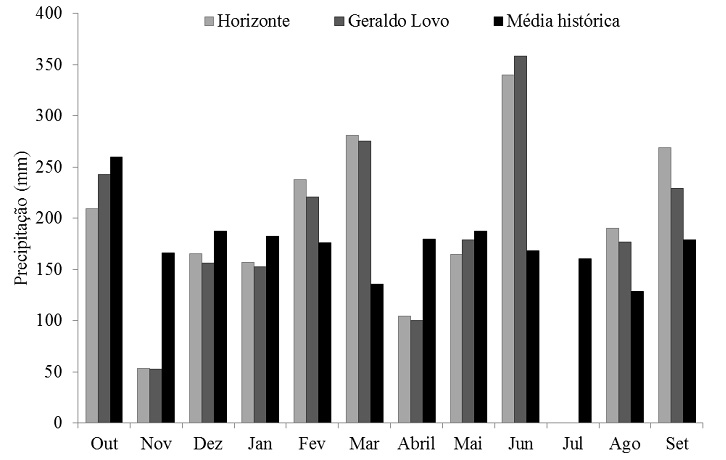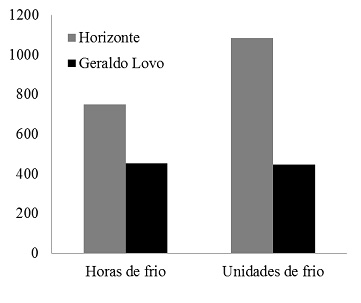ABSTRACT
The information on the amount of cold in places with distinct microclimates is an important technology subsidy for apple growers, asit reduces production costs by optimizing the time of application of induced sprouting, providing better homogenization of budding and fruiting, favoring the fruit quality and giving information to the farmer for the choice of species and cultivars most adapted to the local microclimate. The aim of this study was to characterize the microclimate in apple orchards and calculate the chilling hours and chilling units accumulated from April to September 2013, as well as evaluating the trend and temporal variability of the number of chilling hours for the South region of the State of Paraná. For that, two automatic meteorological stations were installed within apple orchards, in two locations in the municipality of Palmas, PR. The registers of climatic data were obtained from October 2012 to September 2013. For climatological analysis of chilling hours, time series data from 1979 to 2013 from a conventional meteorological station, from IAPAR, placed in the municipality of Palmas, PR, were used. There are differences in the amount of chilling hours and units accumulated in nearby localities with distinct microclimate. In 2013, July and August were the months with more chilling hours. The amount of chilling units was similar among the analyzed methods (North Caroline modified and Utah modified). There is decadal trend of reduction of chilling hours in the southern of the State of Paraná.
Cryophilic species; Malus domestica ; Amount of cold; North Caroline modified; Utah modified

 Thumbnail
Thumbnail
 Thumbnail
Thumbnail
 Thumbnail
Thumbnail
 Thumbnail
Thumbnail
 Thumbnail
Thumbnail
 Thumbnail
Thumbnail
 Thumbnail
Thumbnail
 Thumbnail
Thumbnail








